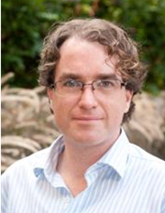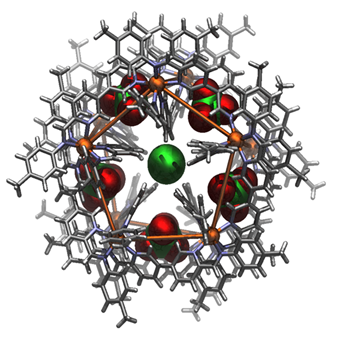










|
Title of Talk Self-assembly of metallo-supramolecular cages, barrels and cubes: subtle changes produce significant consequences
Abstract The self-assembly of multi-nuclear metallosupramolecular architectures has received significant recent attention due to potential applications in host-guest chemistry and catalysis. The programmed formation of these beautiful and complex systems generally results from the combination of the inherent geometric, electronic and steric information present in each of the metallic and organic components. By designing new ligands that incorporate dynamic (reversible) covalent bonds it is possible to design systems that have new geometries and functions with often unexpected results. In this way we have been able to prepare a variety of new architectures including M10L15 barrels,1 cubes2 and a wide variety of M4L6 tetrahedra that exhibit very strong and selective anion binding.3 In addition, we have been able to show that a system of these cage molecules is capable of adapting to a range of external stimuli by changing cavity volumes and diasteromeric composition to produce a mixture of molecules with the ideal cavity for binding the guest molecule presented to it.4 In this talk the result of a systematic investigation into the effects of metal ion and anion variation on the self-assembly process will be discussed.5
References: 1. Riddell, I. A.; Smulders, M. M. J.; Clegg, J. K.; Hristova, Y. R.; Breiner, B.; Thoburn, J. D.; Nitschke, J. R., Nature Chem. 2012, 4, 751 2. Browne, C.; Brenet, S.; Clegg, J. K.; Nitschke, J. R., Angew. Chem., Int. Ed. 2013, 52, 1944 3. Ma, S.; Smulders, M. M. J.; Hristova, Y. R.; Clegg, J. K.; Ronson, T. K.; Zarra, S.; Nitschke, J. R., J. Am. Chem. Soc. 2013, 135, 5678 4. Clegg, J. K.; Cremers, J.; Hogben, A. J.; Breiner, B.; Smulders, M. M. J.; Thoburn, J. D.; Nitschke, J. R., Chem. Sci. 2013, 4, 68 5. Riddell, I. A.; Hristova, Y. R.; Clegg, J. K.; Wood, C. S.; Breiner, B.; Nitschke, J. R., J. Am. Chem. Soc. 2013, 135, 2723
|
|
Jack K. Clegg, Lecturer
School of Chemistry and Molecular Biosciences, The University of Queensland, Brisbane St Lucia, Queensland, 4072, AUSTRALIA e-mail: j.clegg@uq.edu.au
Profile. Jack completed his undergraduate studies in Chemistry, History and German at the University of Sydney graduating with a University Medal, before completing a Bachelor of Laws and PhD in Chemistry at the same institution. He was awarded the Convocation Medal for extensive contributions towards university life during that time. During the same period, he spent time on the board of the Australian Youth Orchestra and a regional Credit Union in NSW. After leaving Sydney, Jack spent two years on a prestigious Marie Curie Fellowship at the University of Cambridge where he was also a Director of Studies at Emmanuel College. Jack returned to Australia to join The University of Queensland in 2012. Jack is a synthetic chemist and crystallographer. His research interests are in metallo-supramolecular chemistry, metal-organic frameworks, host-guest chemistry, complex systems, interlocked architectures and crystal engineering. Jack has an h-index of 22 and more than 1300 citations.
Selected Publications 1. Clegg, J. K.; Cremers, J.; Hogben, A. J.; Breiner, B.; Smulders, M. M. J.; Thoburn, J. D.; Nitschke, J. R., A Chem. Sci. 2013, 4, 68 2. Riddell, I. A.; Smulders, M. M. J.; Clegg, J. K.; Hristova, Y. R.; Breiner, B.; Thoburn, J. D.; Nitschke, J. R., Nature Chem. 2012, 4, 751 3. Li, F.; Clegg, J. K.; Lindoy, L. F.; MacQuart, R. B.; Meehan, G. V., Nature Commun. 2011, 2, 205 4. Clegg, J. K.; Iremonger, S. S.; Hayter, M. J.; Southon, P. D.; MacQuart, R. B.; Duriska, M. B.; Jensen, P.; Turner, P.; Jolliffe, K. A.; Kepert, C. J.; Meehan, G. V.; Lindoy, L. F., Angew. Chem., Int. Ed. 2010, 49, 1075 5. Glasson, C. R. K.; Meehan, G. V.; Clegg, J. K.; Lindoy, L. F.; Turner, P.; Duriska, M. B.; Willis, R., Chem. Commun. 2008, 1190 |

